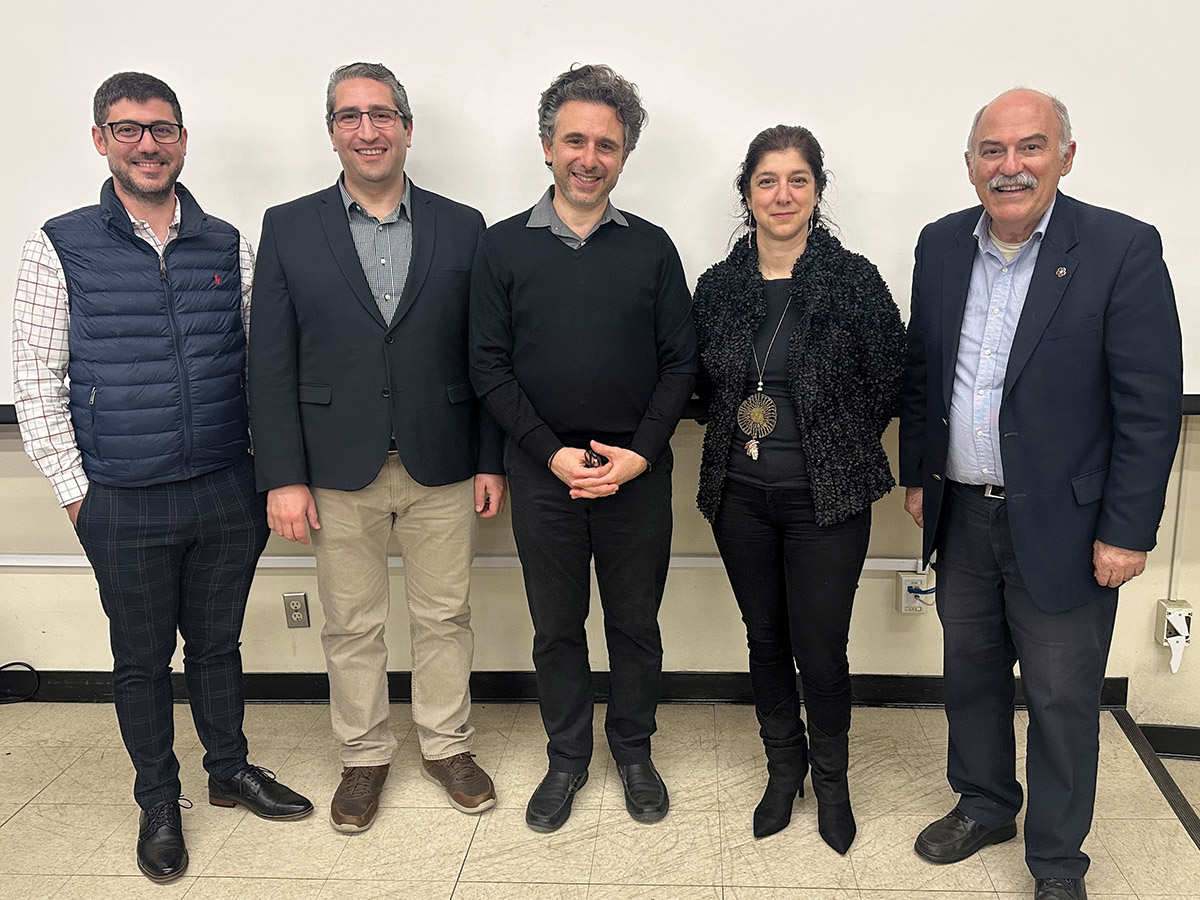
Photo: ASP Archive
Anahid Valencia
Staff Writer
Dr. Hakem Al-Rustom, Manoogian Professor of Modern History at the University of Michigan, Ann Arbor, gave a lecture titled “From Natives to Foreigners: Enduring Erasures of Armenians in Turkey” on Friday, March 21, 2025, at Fresno State.
The presentation was organized by the Armenian Studies Program and the Ralph Shabazian Armenian Memorial Fund.
Dr. Al-Rustom grew up in Cairo, Egypt and is the author of the forthcoming book, Enduring Erasures: Afterlives of the Armenian Genocide (Columbia University Press, Sept. 2025). His lecture was centered around the concept of “denativization,” a topic explored in his new book. “Denativization,” as Dr. Al-Rustom explained, is “the process by which Armenians were erased and deemed foreigners in their homeland following the Armenian Genocide.”
“It is an ongoing structure that continues to this very day,” stated Dr. Al-Rustom. With the events taking place in Artsakh from 2020 until the present, his statement holds significance beyond mere remembrance.
Dr. Al-Rustom recounted how he was approximately 700 feet away from the site of Hrant Dink’s assassination in Istanbul in 2007, which prompted his quest for answers and ultimately the writing of his book.
Dr. Al-Rustom began the lecture by telling the story of Houri, a woman from Sassoun. “As soon as we met, she told me, my own heritage is dying, the Armenian dialect of Sassoun is slowly being forgotten,” Dr. Al-Rustom said.
“Her grandparents faced annihilation, her parents endured forced displacement and she herself lives with the weight of these histories, both inherited and ongoing in the present.”
Houri’s story was used to convey the exclusion felt by many Armenians from both their oppressors and Armenians themselves.
Al-Rustom explained that Houri’s Sassoun dialect of Armenian was considered “fake Armenian” by members of her own Armenian community.
“What makes an Armenian an Armenian – these are always questions that are important to remember, [and] that history is repeating itself in unfortunate ways,” said attendee and Armenian General Benevolent Union Executive member Linda Shekerjian after the lecture.
This is part of the concept of “denativization” – to feel separate from one’s own people because of differences in language and geography. Some may even argue that this system has been set in place by the oppressor to divide a people, in this case, the Armenians.
“We have to understand that there are multiple ways of being Armenian,” said Dr. Al-Rustom. “Also, the fact that some Armenians lost the language has to do with the genocide, so it’s an implication that many people in the diaspora have to live with.”
Dr. Al-Rustom also related the story of a man named Ara, who is from the village of Everek near Kayseri in Turkey. Ara, though he tried, could not find his home village because the Turks attempted traces of it. The church in Everek, as Dr. Al-Rustom would discover, was converted from Sourp Toros to a mosque, Fatih Camii.
“Ara said, even if there are a few thousand remaining Armenians left in Istanbul today, the Armenians will continue to constitute a threat,” Dr. Al-Rustom stated.
Dr. Al-Rustom explained that, because of this so-called threat, Turkey will continue to rescript the past and remove Armenians from the picture, casting Armenian heritage as simply “Anatolian” history. “Turkey is built on the ruins of Armenians,” he said.
Dr. Al-Rustom mentioned a Turkish journalist who claims to be “sympathetic” toward the Armenian Genocide, yet continued to use language that refuses to blame the Turkish government.
This unfortunate reality was discussed not to paint Armenians as helpless, but rather to emphasize their unwavering endurance that has survived through centuries of persecution.
By connecting the atrocities of the Armenian Genocide to current struggles faced by both Armenians living in Armenia and those in the diaspora, Dr. Al-Rustom left the audience feeling empowered, touched, and bonded as a people.
Dr. Al-Rustom’s genuine expression of his research emphasizes the idea that Armenians will continue to live united through the generations, just as they have done for preceding centuries.
 Hye Sharzhoom Armenian Action
Hye Sharzhoom Armenian Action